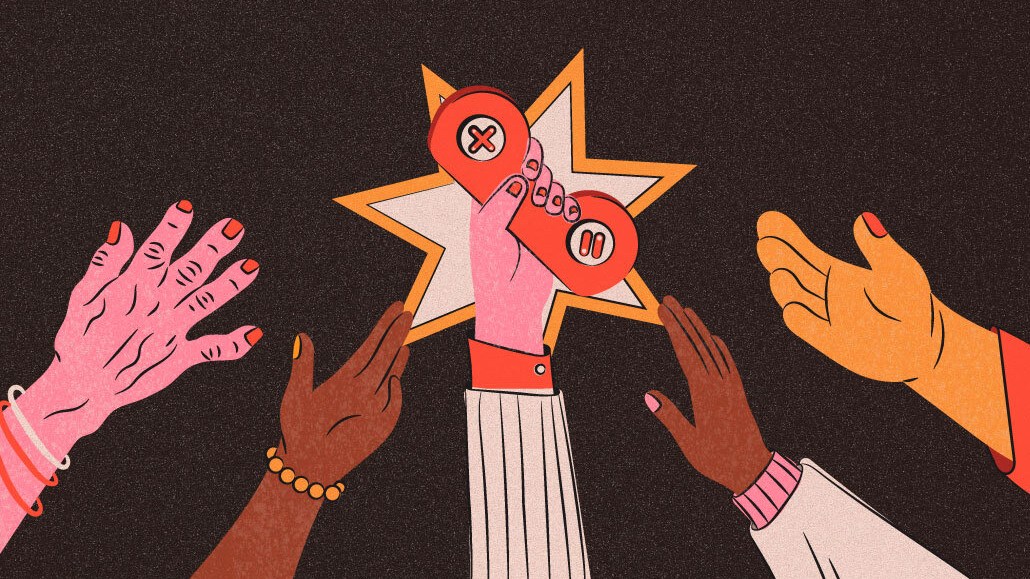Why the ‘year of gaming’ might be the ad industry’s next ‘year of mobile’

At Cannes Lions and beyond, the much-predicted “year of gaming” could be the advertising industry’s next “year of mobile.”
Longtime ad industry observers are likely familiar with the much-vaunted “year of mobile.” From 2012 onward, marketers trumpeted mobile advertising as the next great shift in the industry landscape — even as the “year of mobile” itself kept getting pushed back. At the end of the day, there was never a definitive year of mobile, it was more years — a steady, gradual shift toward mobile advertising becoming a standard part of just about every brand’s marketing budget.
These days, marketers are bringing the same energy to gaming advertising, for better or worse.
Following a rise of gaming activity in 2020 and 2021 sparked by Covid-19 lockdown, industry observers have increasingly speculated about an impending explosion of brands into the space. Did the “year of gaming” already happen in 2020? How about 2022? Or, at long last, will 2024 finally be the year of gaming?
“The idea that brands are going to all of a sudden infiltrate and pour into game units is a kind of recurring misplaced optimism,” said Eric Seufert, consultant, analyst and editor of Mobile Dev Memo, a digital publication covering the mobile advertising industry. “I’ve just heard that so many times.”
Many of the gaming industry’s major players declined to attend this year’s Cannes Lions festival, even those who have been exploring advertising as a revenue stream. Roblox, for example, did not send any representatives to the festival, in spite of the company’s ongoing efforts to grow its ad network. Neither did Discord, despite the platform’s recent push to woo marketers, nor did any of TikTok’s growing gaming marketing team attend.
The absence of some major gaming companies in Cannes reflects a broader plateauing of brands’ spending in the gaming sector, even as advertisers start to take gaming more seriously as a marketing channel. U.S. advertising spend on in-game ads decreased between 2022 and 2023, and the overwhelming majority of brands’ gaming ad spend still takes place inside mobile games.
The fact that the much-anticipated “year of gaming” hasn’t happened yet is not necessarily a harbinger of doom for the gaming industry and its advertising dreams. Much like how mobile is now a standard advertising channel despite the lack of an agreed-upon “year of mobile,” the hype surrounding the concept of a “year of gaming” could simply fade away as gaming becomes a default method for individuals to socialize online and access digital content.
“Gaming is already so ubiquitous in modern culture that you can’t necessarily say, ‘this year is the year.’ Why not two years ago, when everyone was talking about the metaverse? It’s all ‘Fortnite’ concerts and things like that — it’s been a thing,” said Matt Smith, a trends manager at GWI. “In the big five European countries, among Gen Z, more people play video games than eat breakfast or brush their teeth twice a day.”
Looking forward, the rise of gaming as a marketing channel could ultimately result more from gradual, steady growth than from a single explosive year marked by belle-of-the-ball status at Cannes Lions and other industry events. Marketers are growing wiser about the multitude of ways to reach gamers beyond in-game ads, and major publishers such as Electronic Arts have signaled a growing interest in placing ads inside premium console titles. If the industry continues in this direction, the question of exactly which year is the “year of gaming” might become a moot point.
“The technology of getting users that behave in the way that you want them to behave is improving every year, and that will give more companies a sense of confidence that they can spend their dollars in different ways than they did in the past,” said Daniel Tchernahovsky, gaming expert and vp of global business development at AppLovin. “That is definitely happening — but nothing is different today than two weeks ago. 2024 is marginally better than 2023, but 2023 was pretty great as well.”
More in Marketing

Pitch deck: How Amazon is recasting Twitch as a core part of its CTV pitch
Amazon is positioning Twitch as a defining asset in its CTV ambitions.

Netflix transforms former mall department stores into experiential venues
The location in Dallas opens this week, and one at the King of Prussia mall near Philadelphia opened last month.

Future of Marketing Briefing: AI has created a new talent paradox in programmatic agencies
The job isn’t execution anymore. AI handles that. The job is judgement.








